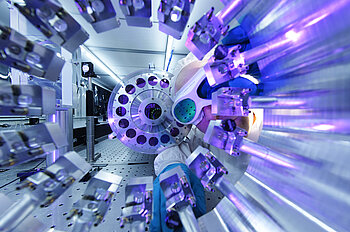Either with tremendous force or very quickly in a row - that's how you could describe the current state of laser technology. Physicists at the Max Born Institute (MBI) in Berlin want to combine both in close cooperation with the diode laser specialists of the Ferdinand Braun Institute (FBH). Their goal is lasers that have high single-pulse powers and can be fired at least a hundred times a second. For the development of such lasers, researchers received 3 million euros from the European Union (European Regional Development Fund - ERDF). The total budget of the project is 6 million.
High intensity lasers are a relatively recent product of physical research. They can emit single light pulses with unimaginable power - far more than the power of all the power plants in the world together. At the same time, the energy of the individual pulse is compressed into a period that is significantly shorter than one millionth of a millionth of a second. Because of their high single pulse power, such lasers are revolutionizing many areas of science, engineering and medicine. They serve, among other things, the generation of new states of matter, the ultraprecision machining of materials or the generation of particle or photon radiation with unprecedented properties. It is even expected that within the next year nuclear fusion can be demonstrated for the first time using high-intensity lasers - perhaps a step towards a relatively clean and virtually inexhaustible source of energy.
